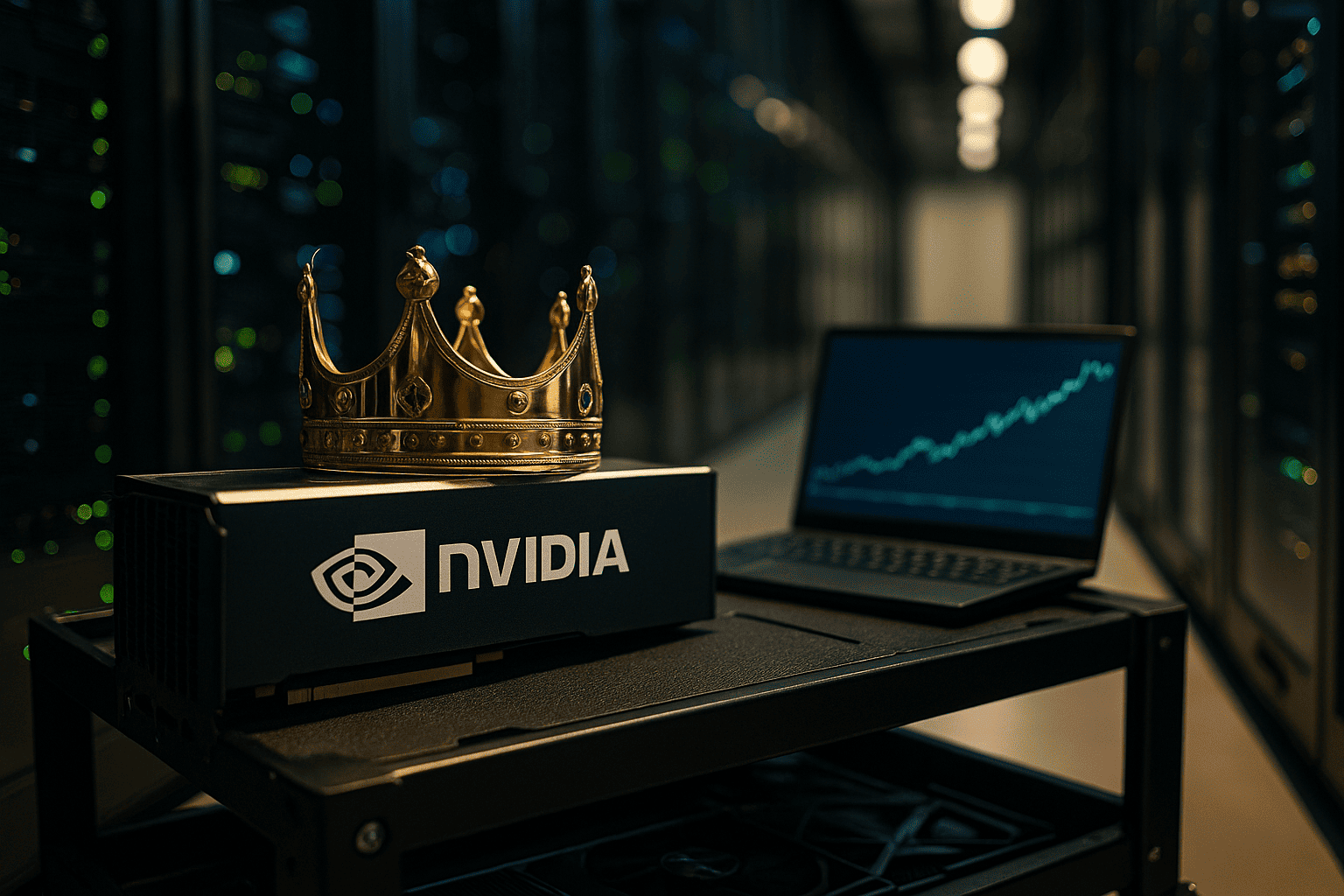Nvidia Blasts Past $5 Trillion, Crowned AI’s First Superstock
By Tredu.com • 10/29/2025
Tredu

A milestone that redefines tech leadership
Nvidia became the first company to reach a $5 trillion market valuation, a landmark that cements its central role in the global artificial intelligence buildout and resets the pecking order in megacap tech. The stock vaulted on Wednesday, with fresh highs pushing market value through the threshold and reinforcing the idea that Nvidia is no longer just a chip designer, it is the platform enabler for the AI economy. Analysts framed the move as the culmination of relentless product cadence and demand from clouds, enterprises, and governments.
The orders and partnerships behind the surge
Momentum is underpinned by unusually long visibility. Recent disclosures and reporting highlighted roughly $500 billion in AI chip bookings and plans tied to multiple U.S. government supercomputers, a combination that extends demand into the second half of the decade. Those signals help explain why Nvidia blasts past $5 trillion, since multi-year orders reduce the risk that today’s cycle is a short-lived spike.
What $5 trillion implies for earnings power
At a $5 trillion valuation, investors are underwriting a multi-year AI capex boom, continued share in accelerators and networking, and expanding software economics. The bar is high, but not implausible if unit supply rises, pricing remains disciplined, and platform lock-in holds. Street debates now center on the glide path for gross margins as newer platforms ship and on how quickly software and services can complement hardware cycles.
Supply, power, and platform risk
Expansion depends on more than chips. Power availability, advanced packaging capacity, and network fabric throughput set practical limits on cluster rollouts. Any hiccups can shift deliveries and elongate revenue recognition. Nvidia’s strategy has been to attack bottlenecks across the stack, pairing accelerators with interconnects, compilers, and libraries so customers can deploy at scale. That integrated approach is one reason the company is crowned AI’s first superstock at $5 trillion, rather than just one more supplier in a crowded market.
Competitive pressures are real, but timing matters
Rivals and custom silicon programs are accelerating, and some sovereign buyers want diversified suppliers. Yet switching costs and software ecosystems are formidable. So long as performance per watt and total cost of ownership improvements arrive on schedule, incumbency tends to extend by another product cycle. The risk case is a pause in cloud orders while customers digest capacity; the base case is that backlogs and sovereign programs bridge digestion phases.
Macro cross-currents: rates, trade, and policy
A friendlier rate backdrop usually supports high-duration equities, but policy risks still lurk. Export screening, procurement rules, and trade negotiations can throttle shipments or redirect supply. This week’s diplomatic calendar has already tied AI chips to broader trade talks, a reminder that geopolitics can swing sentiment even on days when fundamentals dominate the tape.
Index gravity and market breadth
Nvidia’s jump carries outsize index impact. Gains helped lift major U.S. benchmarks to or near records as the chipmaker added hundreds of billions in market value within days. The concentration is a double-edged sword: it accelerates performance during upswings, but it can amplify drawdowns if positioning is crowded. Portfolio managers are navigating this by pairing core exposure with risk hedges while rotating incrementally into beneficiaries across memory, power, and cooling.
Reading the tape from here
Three signposts will test whether $5 trillion is a plateau or a waypoint. First, cadence on next-gen platform launches and evidence that yields and packaging scale as planned. Second, backlog granularity that stretches visibility into 2027, especially for sovereign and national lab projects. Third, early proof that software monetization and services revenue can smooth cyclical hardware swings. Clear delivery on these fronts would validate a durable range near the milestone.
What could dent the thesis
Supply dislocations, power constraints that delay data center buildouts, or sudden policy limits on key markets could slow revenue. A broad pause while customers absorb recent capacity would also challenge momentum. In any of those cases, the valuation would likely recalibrate, though history suggests that execution and ecosystem depth have helped the company recover from digestion phases quickly.
Why the milestone matters beyond symbolism
Breaking the $5 trillion ceiling formalizes the AI economy’s migration from promise to infrastructure. Capital formation, grid investments, and software pipelines now revolve around clusters that Nvidia helps define. That makes the firm both a barometer and a catalyst for the next phase of digitization. Investors, regulators, and customers will treat each roadmap update as a macro signal, not just a product launch.

How to Trade Like a Pro
Unlock the secrets of professional trading with our comprehensive guide. Discover proven strategies, risk management techniques, and market insights that will help you navigate the financial markets confidently and successfully.


